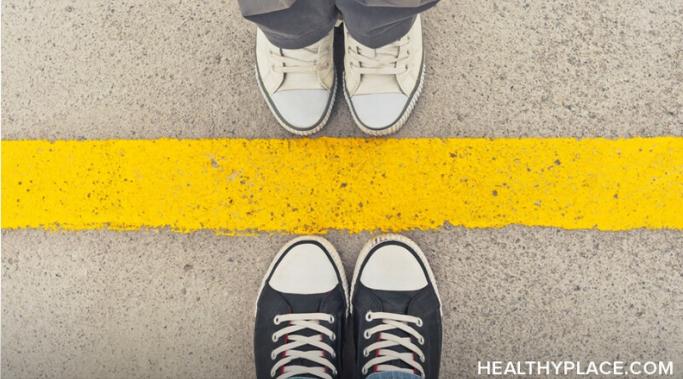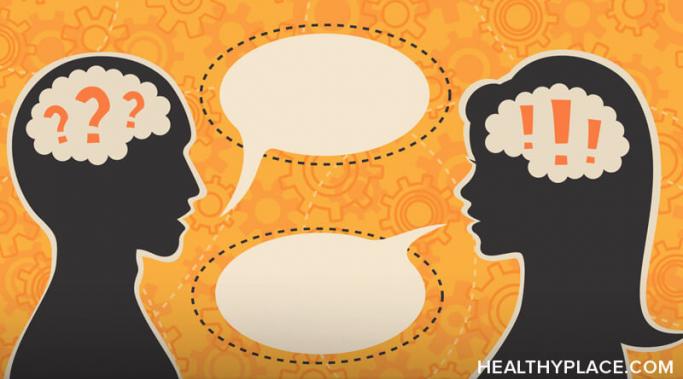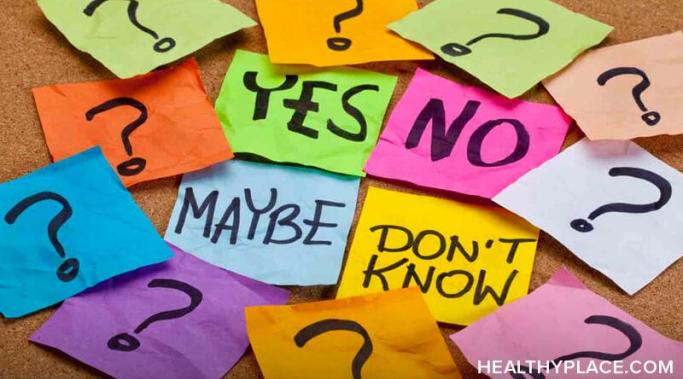Boundary-setting is an important skill set to practice when you are on a journey to build stronger self-esteem. Like any other new activity that seems challenging in the beginning, your mastery will improve every time you try it.
Assertivness
When you trust your decisions, your self-esteem will grow. People with poor self-esteem often second-guess themselves and defer to others' opinions. While it's true that there are people who know more than you do on almost every topic, there is one subject on which you are the world's leading expert, and that subject is you.
When you practice setting boundaries that protect your self-esteem, you are supporting yourself in many ways. It shows you love and respect yourself, and it keeps you from grief when others attempt to abuse you, intentionally or inadvertently. Whether it's between you and people you love and choose to have in your life or people you must interact with for your job or another requirement, creating a boundary that reflects your needs will strengthen your self-esteem.
Are there any activities to build self-esteem? Yes, there are. In fact, the most common question I get asked about building self-esteem is where to start. Often, we can clearly picture the version of ourselves we desire to embody, yet we struggle to take the first few steps towards it. Self-esteem starts to feel like a massive undertaking, something we can see in the distance but never gets any closer. To help, here are a few fresh new activities to build self-esteem that have worked for several of my clients.
Does seeing a therapist increase self-esteem and the self-esteem building process? While our society is working hard to de-stigmatize the belief that therapy exists only for people in crisis or with chronic mental illness, we still tend to think of therapy as something to help us move from bad to neutral, instead of from neutral to good. Yet therapists are trained to understand how the mind can build confidence and create sustainable change. As you consider adding therapy to your self-esteem journey, read on to learn three ways that therapy can help increase self-esteem.
Vulnerability is not something we normally link with self-esteem. We are much more inclined to picture an impenetrable sort of confidence, a version of ourselves where nothing can breach our walls of strength and self-adoration. Yet vulnerability is not only an incredibly powerful tool for those already on the road towards building self-esteem–it is also a very good place to start.
Finding self-love after a traumatic suicide attempt seems like a daunting task. After all, of the many thoughts circling the brain after an event of intended suicide, very few of if any are positive. It's more common to feel fear, shame, and misery. And eventually the question will arise–can I ever learn to love myself after the trauma of a suicide attempt? (Note: This post contains a trigger warning.)
What are the signs of self-esteem? What does it feel like to have healthy self-esteem? Is it unconditional adoration of yourself? Is it the confidence you can do anything? Is it the belief that you're beautiful, both inside and out? In an ideal world, we would feel all of these things. But realistically, our relationship with ourselves is complicated–we all have things we like and things we wish weren't a part of us. A completely positive self-view is overly idealistic and, frankly, inauthentic. So, if self-esteem isn't all sunshine and daisies, what is it? And how do we know if we have it--what are the signs of self-esteem?
In the perfect world, things would go according to plan. We would achieve our weight-loss goal and feel amazing, fall in love and create the perfect relationship together, or start meditating and discover inner peace. But life is not linear–sometimes the steps we think will take us forward actually shift us to the side, or even backwards. This can happen with self-esteem. Though we achieve one of our goals, our self-confidence takes a sudden dip. Why does this happen? And what can we do to recalibrate?
Baby steps are a great way to build self-esteem. It's kind of like climbing a mountain: From the distance, we see a simple shape. It looks easy enough to climb if we just start walking uphill. Yet the closer we get, the more we realize that what looked like a basic silhouette is actually filled with valleys, cliffs, detours, and falling rocks. Suddenly, we start to question ourselves. Where do we start? How much energy will it take? What happens if we get turned around? This is when we can turn to baby steps to build self-esteem. When we measure our progress in smaller increments, we have more opportunities to reflect on our progress and make sure we are headed in the right direction.









